Hoi An ancient ship reappears after storm Kalmaegi
Since November 8, people walking on Tan Thanh beach, Hoi An Tay ward, Da Nang city have suddenly discovered the hull of an ancient wooden ship emerging from the sand. This artifact is considered almost intact and has high archaeological value.
Mr. Pham Phu Ngoc, Deputy Director of Hoi An World Cultural Heritage Conservation Center (BTDSVHTG) said: “After the flood, big waves exposed the hull of the ship. As soon as we received the information, the Center coordinated with the authorities to cordon off the area, put up warning signs and warn people not to approach, in order to protect the current status. We are currently coordinating with the authorities to verify the origin of the ship, establish an archaeological record, and propose a plan to excavate and protect the artifacts from the risk of further erosion by sea waves.”
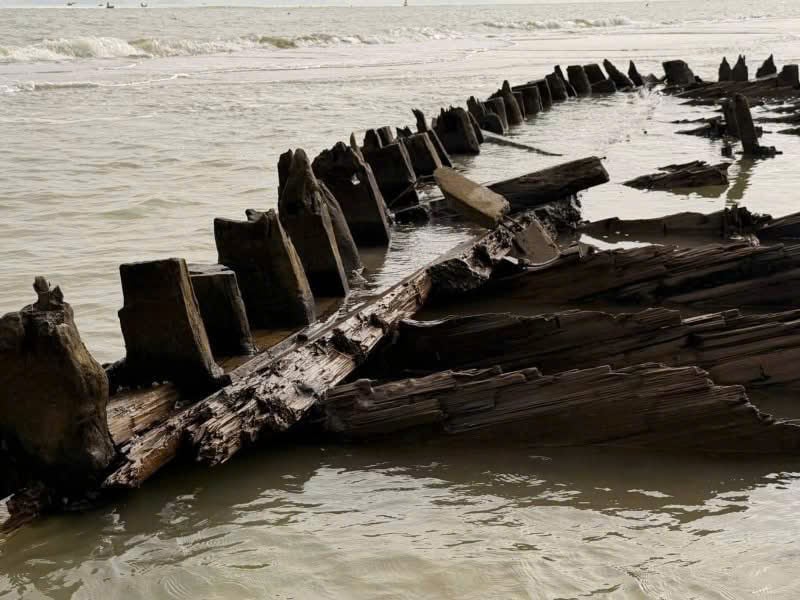
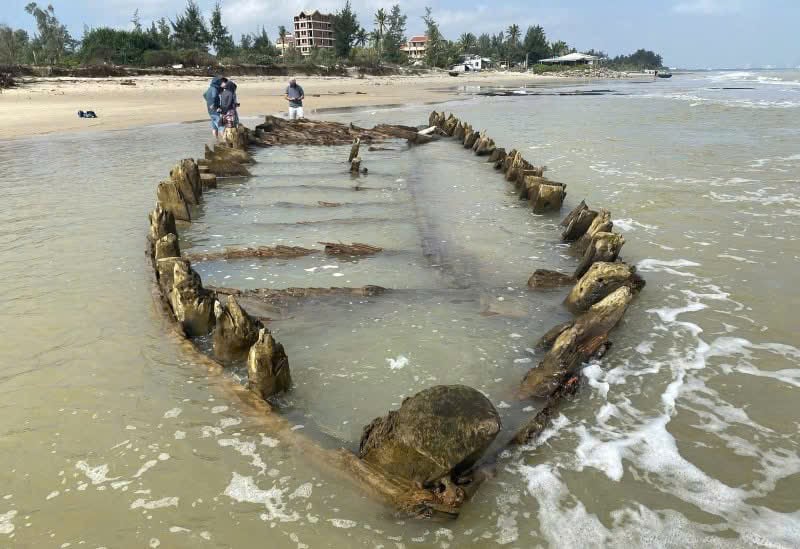
After storm number 13, sea waves revealed part of an ancient wooden boat buried in the sea sand.
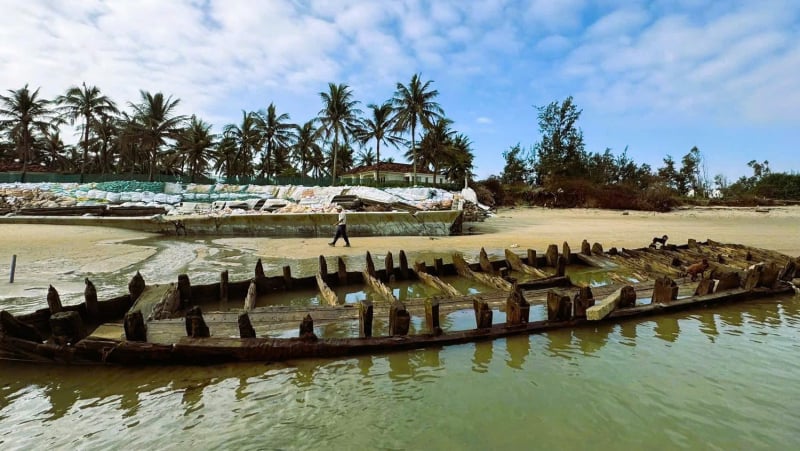
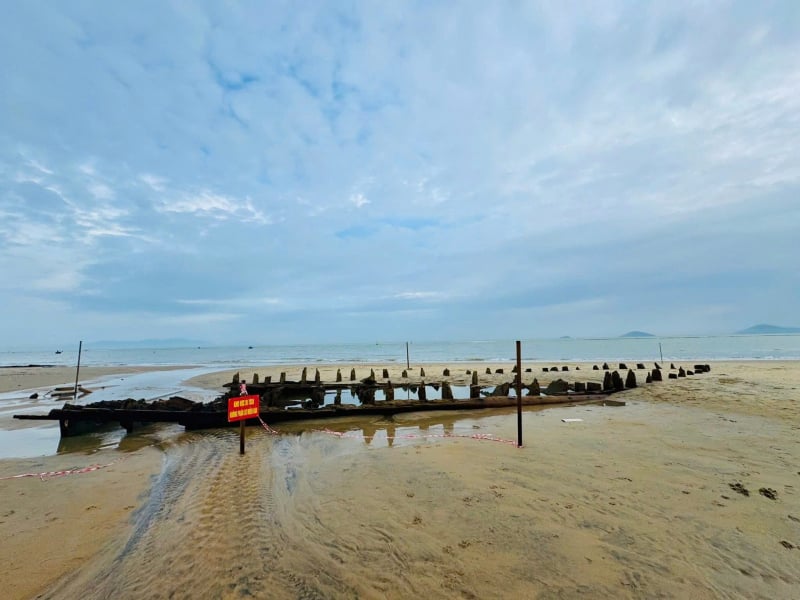
Hoi An World Cultural Heritage Conservation Center coordinated with functional forces to demarcate the area and put up warning signs to protect the current state of the ancient ship that had just appeared.
The ship was discovered by Hoi An residents in the early morning of December 26, 2023, and was then buried in the sand. The initial discovery location was close to the coast of Thinh My block, about 400 meters from the People's Committee of Cam An ward (old), facing An Bang sea. The wooden frame emerged from the sand layer, hugging the entire hull of the ship, revealing the intact shape of the ancient ship.
The location of the ship’s discovery is in an area strongly affected by tides, monsoons and waves. Without timely protection measures, just a few more storms will be enough to erase all traces. Therefore, conservation work needs to be carried out according to the principle of “emergency rescue” of underwater heritage, combining archaeology, wood conservation and the application of digital technology to preserve all information before the ship continues to be buried or damaged, Mr. Pham Phu Ngoc emphasized.
Many interesting hypotheses surrounding the ancient shipwreck have just emerged.
In a scientific report conducted by the Hoi An World Heritage Conservation Center in collaboration with the University of Social Sciences and Humanities in Ho Chi Minh City, researchers stated that the ship was elaborately crafted, with large wooden bars and bolts, tightly joined with iron nails, and round holes through the hull, ensuring a solid structure. The good quality of the wood helps preserve many details intact. The beach area where the ship appeared also discovered many pieces of Chinese blue and white porcelain dating from the 17th - 18th centuries, suggesting the possibility that this was a foreign ship that sank on its journey through the Cua Dai sea area.
The forensic analysis results show that the ancient ship used different types of wood: the beams were made of Lagerstroemia sp., most likely Lagerstroemia sp., the raft planks were made of Hopea sp., while the deck and bulkheads were made of Pinus sp. This shows that the ship followed the long tradition of tropical wood shipbuilding in Southeast Asia, especially in the South Indochina region, with wood species such as Lagerstroemia and Hopea sp.; and at the same time, the temperate wood of pine was used, reflecting the Chinese origin of the techniques and materials.
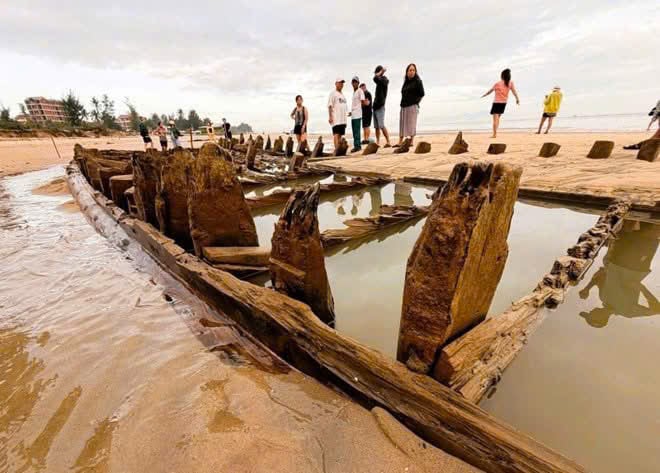
Locals and tourists in Hoi An came to see the ancient ship appearing at Tan Thanh beach, Hoi An Tay ward from the morning of November 8.
According to scientists, the structure of the ancient ship allowed it to make long voyages, serve commercial activities at sea or even participate in naval battles. Experts also said that the ship was over 17.8 m long with about 12 compartments. Regarding the age, although there has not been an absolute dating result, archaeological data shows that the ship is likely from the period from the end of the 14th century to the 16th century.
The bow section is more than 10 cm thick, while the stern section is only 4 cm, showing special calculations to withstand head-on collisions or defense. The small, narrow compartments, only about 80–90 cm, are not suitable for carrying goods, but are suitable for anti-sink, anti-bullet purposes, increasing the ability to survive in combat. The seams are tightly joined, carefully treated, ensuring effective waterproofing, showing the sophisticated shipbuilding level of this period.

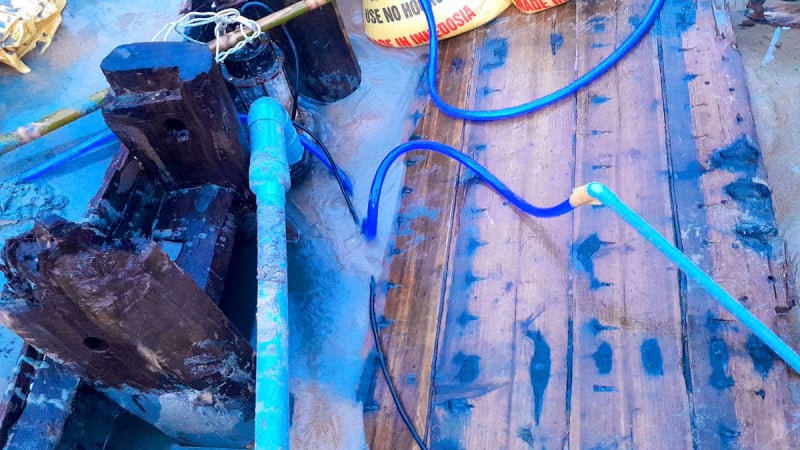
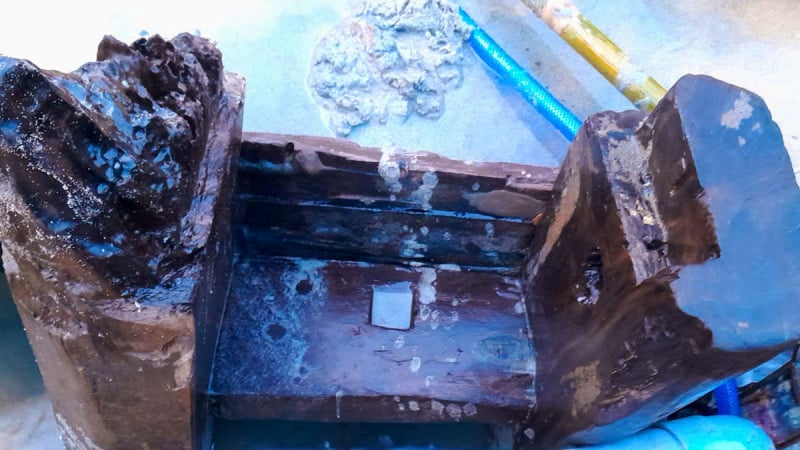
Scientists collect and preserve C14 samples, wood species and pollen spores for analysis according to scientific principles to ensure accurate analysis.
Based on archaeological data, experts hypothesize that this could be a pirate ship or an ancient warship. Both possibilities are plausible, because the hull is sturdy and thick, far surpassing that of ordinary merchant ships. Notably, the boat structure and wood joining techniques are similar to the model of a boat in the South China region of Guangdong, not resembling a Vietnamese boat. Many sections of the hull use pine wood, a material that Vietnamese people rarely use to build boats, further strengthening the hypothesis of the foreign origin of this ancient ship.
Proposal for urgent excavation for research and conservation
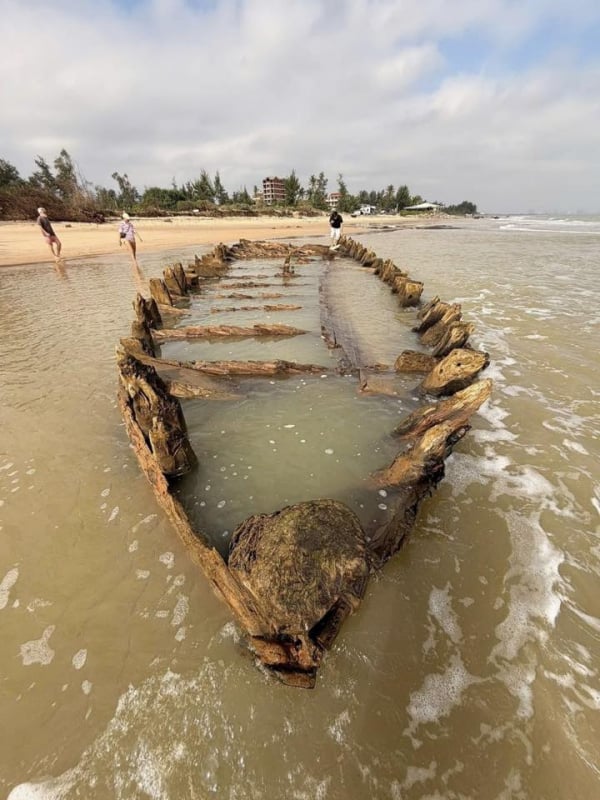

Hoi An World Cultural Heritage Conservation Center: "This is an extremely rare relic that needs to be urgently excavated to protect its current state, and at the same time collect and research the value of the ship."
The discovery of an ancient ship at Tan Thanh beach (Hoi An Tay ward, Da Nang city) is attracting special attention from the public. Archaeologists consider this an ancient ship treasure, preserved almost intact, of great value in maritime history and archaeological research. Faced with the risk of damage due to waves, weather and landslides, the Hoi An World Cultural Heritage Conservation Center has proposed an urgent excavation to protect the current status of this rare relic.
Locals said that the beach area used to be garden land, but the process of sea erosion has eaten hundreds of meters into the mainland. Each storm, big waves gouge deep, wash away the sand and reveal wooden structures lying underground. Many people believe that there are still many ancient shipwrecks that have not been discovered, hidden under the thick layer of sand. Currently, the ship is still in the same position, not salvaged due to the complex coastal erosion, the risk of re-burial still exists.
In response to the great interest of tourists and residents coming to see the ancient shipwreck exposed in the open air, the local authorities have implemented temporary protection measures. Chairman of the People's Committee of Hoi An Tay Ward, Mr. Bui Van Dung, said that the People's Committee forces were present at the scene, stretched ropes, planted stakes around the site, preventing strangers from approaching, and coordinated propaganda to prevent residents and visitors from entering the relic area.
Mr. Pham Phu Ngoc, Deputy Director of Hoi An World Cultural Heritage Conservation Center, emphasized: “This is a particularly rare relic that needs to be urgently protected to avoid the risk of damage due to waves and weather. We have proposed an urgent excavation to protect the current state, and at the same time collect and study the value of the ship.”
According to the Center's report, the ship was first discovered in late 2023 and the Quang Nam Provincial People's Committee agreed on the policy of emergency excavation. In 2024, the Center coordinated with the Ho Chi Minh City University of Social Sciences and Humanities and the Quang Nam Museum (formerly known as Da Nang Museum) to survey and appraise the specimen. Through technical characteristics, shape and materials, experts determined that the ship dated from the mid-to-late 14th - 16th centuries, the same period as the East Sea-style merchant ships discovered in Southeast Asia.
Current measurements at the site show that the exposed hull is 17.8 m long and more than 5 m wide, with many technical details still clearly visible. However, most of the hull is still buried under sand, in an area regularly affected by tides and landslides, making conservation work difficult.
Experts assess that if excavated, this will be one of the most important underwater archaeological discoveries in Vietnam in recent years, contributing to clarifying the history of international trade of Hoi An port and the central coastal region in the Middle Ages; demonstrating the important role of Hoi An on the Southeast Asian trade map many centuries ago...
Source: https://cand.com.vn/Xa-hoi/de-xuat-khai-quat-khan-cap-tau-co-hoi-an-i787589/






























































































![Dong Nai OCOP transition: [Article 3] Linking tourism with OCOP product consumption](https://vphoto.vietnam.vn/thumb/402x226/vietnam/resource/IMAGE/2025/11/10/1762739199309_1324-2740-7_n-162543_981.jpeg)










Comment (0)